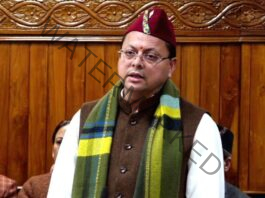The ever growing rate of student suicides in India has raised serious concerns about youth’s mental health in the country. A significant surge in student suicides over recent years, as revealed by data of National Crime Records Bureau (NCRB) brought a shocking truth to the fore. In 2021, 13,089 student suicides were reported which brought the daily average of more than 35 youths succumbing to pressures. Alarmingly, this translates to a student suicide roughly every 40 minutes in India.
A recent report, prepared by International Career and College Counseling or IC3, an organization dedicated to help young people find career paths through education revealed disturbing rise in suicidal pattern amongst students across India.
Unprecedented surge in student suicides grips India
The 2021 NCRB report recorded a total of 13,089 student suicides, representing a considerable increase of 4.5% from the previous year’s numbers. Likewise, the 2020 data showed a substantial rise of 21.2% in student suicides compared to the 2019 figures. As per NCRB data, in 2017, 9905 cases of students suicides were reported which escalated to 10,159 in 2018, 10,335 students suicides in 2019, 12,526 student suicides in 2020 and 10,089 in 2021 respectively.
Over the last decade (2012-21), 97,571 student suicides were recorded, a 57% increase compared to the prior decade (2002-11).
Student suicides surpasses population growth rate and overall suicidal pattern
The incidence of student suicides is displaying a concerning trend, surpassing both population growth rates and overall suicide trends. Over the last decade, while the population of 0-24 year-old reduced from 582 million to 581 million, the number of student suicides increased from 7,696 to 13,089, revealed the report.
Over the course of the last twenty-year and ten-year periods, the population of 0–24 year-olds has grown 0.2% and -0.02% respectively, student suicides exhibited a compounded annual growth rate of 4% and 7% respectively. In comparison, overall suicides grew 2% annually, but this rate surged to 5% over the last five years
Rise in Male and Female student suicides in past decade
In the year 2021, male students constituted 57% of the total student suicides. An analysis of the past decade reveals a staggering 113% surge in male student suicides and a worrisome 79% increase in female student suicides.
Moreover, over the span of the last two decades, both male and female student suicides have experienced substantial percentage increases, particularly evident when observing the data in five-year intervals.
| Time Period | Male Students Suicides | Female Students Suicides | % Male Student Suicide | % Female Student Suicide |
| 2002-06 | 15,568 | 12,481 | ||
| 2007-11 | 18,777 | 15,367 | 21% | 23% |
| 2012-16 | 21,901 | 19,655 | 17% | 28% |
| 2017-21 | 30,488 | 25,525 | 39% | 30% |
Regional disparities reveal concentrated cases in certain States
Maharashtra reported the highest number of student suicides at 1,834, followed by Madhya Pradesh with 1,308 suicides, Tamil Nadu with 1,246, Karnataka with 855, and Odisha with 834. Remarkably, these five states together accounted for 46% of the total student suicide cases in the country.
On the other hand, Uttar Pradesh, despite being the most populous state in the country, recorded a comparatively lower percentage of student suicide cases, constituting only 5.3% of the nationwide total. This is particularly significant considering that Uttar Pradesh’s population constitutes 17.3% of the country
Significant fluctuations in student suicide rates have been observed in several states over the last five years. There was a dramatic increase of 207% in Jharkhand and a considerable surge of 186% in Rajasthan. On the other hand, West Bengal showed a promising improvement, with a notable decrease of 76% in student suicides during the same timeframe.
Southern states, UT report 29% of all student suicides
When examining regional variations, the southern states and union territories of India – namely Andhra Pradesh, Telangana, Karnataka, Kerala, Tamil Nadu, Puducherry, Andaman & Nicobar Island, and Lakshadweep – reported 29% of all student suicides across the nation.
Student suicides in States with significant trends
| States | Student Suicides | Total Students Suicides | One year change | Five year change |
| Maharashtra | 1834 | 14% | 11% | 36% |
| Madhya Pradesh | 1308 | 10% | 13% | 55% |
| Tamil Nadu | 1246 | 10% | 34% | 27% |
| Karnataka | 855 | 7% | 24% | 58% |
| Odisha | 834 | 6% | -43% | 114% |
| Jharkhand | 716 | 5% | 2% | 207% |
| Rajasthan | 633 | 5% | 9% | 186% |
| West Bengal | 272 | 2% | -16% | -76% |
Student suicides surpass Farmer suicides
Student suicides constituted 8% of the total suicides in 2021, a notable increase from the previous seven years when they accounted for 5.6% of the total cases of suicides reported in country.
During this same period, student suicides experienced a rise of 62%, contrasting with a decline of 12% in farmer suicides. Notably, the year 2021 saw a total of 13,089 student suicides and 10,881 farmer suicides recorded in the country, the report added.
RISK FACTORS PROMPTING SUICIDES IN STUDENTS
1) Academic distress: Equating success to academic excellence, marks and ranks.
2) Forced career choices: Pressure of family and teachers when chosing courses, careers.
3) Lack of support from Educational Institutions: Lack of infrastructure and trained human resources for guidance and counseling.
4) Ragging and Bullying: Degradation of a student’s dignity and cyberbullying.
5) Discrimination: Caste-based discrimination, racism, sexism, and classism.
6) Financial stress: The steep cost of preparatory courses and tertiary education.
7) Changing family structures: smaller, nuclear families leading to disappearance of joint or extended families have reduced support systems and increased loneliness among youths.
8) Emotional Neglect: Childhood trauma, abuse potentially leads to suicidal ideation.
9) Societal apathy: Society’s indifference towards mental health conditions, stigma, humiliation and discrimination.
10) Undetected psychiatric disorders: Undetected conditions due to lack of communication by students with teachers, parents or mentors.




